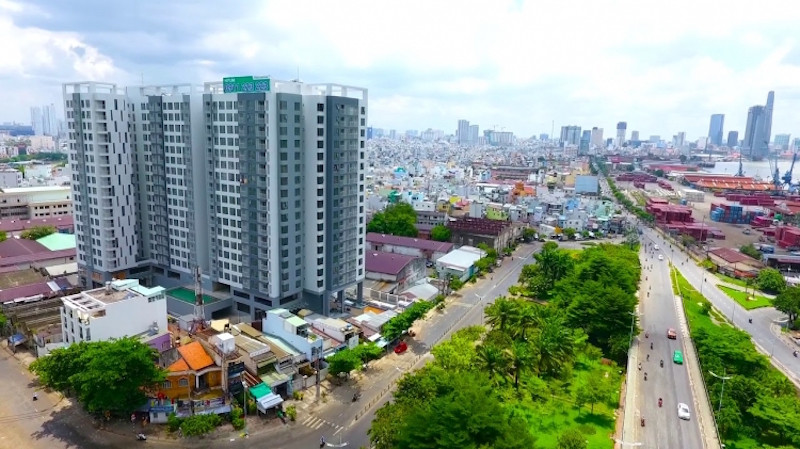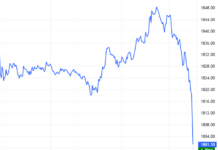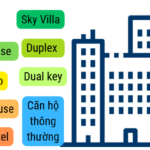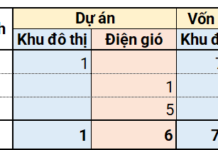Avoiding Market Shocks
Vo Nhat Lieu, Director of PROPIIN Real Estate Project Development Institute, recalls that around 2022, feverish speculation pushed land prices in outlying areas to record highs. Ms. Lieu raises the question of whether, with new policies in place by early 2026, land prices will continue to soar. In such a scenario, will ordinary people, especially young homebuyers, still be able to afford land for residential purposes, or will it be investors fueling further investments?
Conversely, land use fees currently account for about 20% of project value, posing a challenging figure and a variable for businesses in project development. In project development, businesses always treat it as a variable due to the lack of a standardized formula.

Land price charts should be updated according to market prices but with a roadmap to prevent shocks and market disruptions.
Therefore, Ms. Lieu proposes not to apply a standardized formula for land use fee calculations and instead suggests a categorization approach. The first group comprises direct land users, for whom a suitable mechanism should be devised to cater to the majority of the population, with specific calculations.
The second group includes those who own two to three land plots, and a collection rate of 30-50% could be applied. The third group consists of real estate investors, who should pay 100% of the land use fees, alongside a transparent calculation method.
“Implementation requires a buffer to prevent market shocks and sudden price hikes. Currently, it’s just a pilot, but the market and people have already experienced multiple shocks. Applying this at the beginning of 2026 could lead to significant market fluctuations. To prevent such volatility, we should stagger the timeline to support both the people and businesses,” Ms. Lieu said.
Another noteworthy point, according to the Director of PROPIIN Real Estate Project Development Institute, is that state management agencies and local authorities should calculate land prices appropriately, balancing and rationalizing them across provinces to prevent land speculation in border areas. This situation has been prevalent in the past when, on the same street, land on one side belonging to Province A is priced at VND 2 billion, while on the other side, in Province B, it reaches VND 4 billion.
Similarly, Dr. Tran Viet Anh, Vice Principal of Hung Vuong University, assesses that the current land valuation and allocation process is overlapping and lacks transparency. Finding a valuation company is challenging, especially for schools, hospitals, and public land.
“Recently, there have been several land-related cases where the valuation process led to legal issues, making companies hesitant to value public land. Additionally, while the central regulations are quite open, local authorities interpret them differently, hiding certain aspects. Some projects are stalled due to compensation procedures. Another reason is the lack of clean land for social housing,” Dr. Viet Anh said.
Hence, Dr. Viet Anh suggests updating land price charts according to market prices but with a roadmap to prevent shocks and disruptions to the real estate market and, consequently, social welfare, social housing, and affordable housing.
Dr. Tran Viet Anh illustrates this with a recent example from Cat Lai Roundabout in Ho Chi Minh City, where compensation was VND 81 million per square meter, forcing investors to offer higher prices, which, in turn, pushed up land prices. Enterprises must make a profit, so if the compensation is VND 81 million per square meter, the selling price must be VND 200 million. Therefore, land prices need to be clearly defined.
Striking a Balance
Lawyer Truong Anh Tu, Chairman of TAT Law Firm, said that in the past, when people sold one square meter of land, the money they received was only enough to buy a bowl of beef noodles, but now they have to buy it back from enterprises at VND 100 million per square meter.
However, Lawyer Truong Anh Tu also shared that, in reality, since the enactment of the Land Law, young people have struggled to buy houses and find a place to settle down. Enterprises face numerous challenges, with only nine projects but having to pay VND 65,000 billion in land use fees. As a result, profit margins will undoubtedly not be the same as before. With high housing prices, first-time young homebuyers face difficulties.

Only when people can see the numbers and formulas for themselves will the price charts be truly convincing and compliant.
“Land prices must strike a balance, ensuring that the state does not lose tax revenue, enterprises maintain profitable operations without reduced profit margins, supply and demand remain unaffected, and people can still afford housing. That is the overarching goal. Thus, land prices should be reasonable and approached with justice in mind, not necessarily following market prices,” Mr. Tu said.
To address this issue, Lawyer Truong Anh Tu proposes transparentizing the entire valuation process and data. Land valuation cannot be a closed-door process. It is necessary to publicly disclose valuation maps, adjustment coefficients, calculation methods, and input data. An open electronic portal for the entire population should be established so that when people receive a tax notice of VND 1-2 billion, they can access this portal, search, and understand the basis and precedent for the amount. Only when people can see the numbers and formulas for themselves will the price charts be truly convincing and compliant.
Next, it is crucial to classify financial obligations. A resident in Nghe An only wanted to change the purpose of their land from garden to residential but had to pay taxes amounting to VND 4.5 billion. Similarly, a person in the Southeast region withdrew their application due to taxes exceeding their financial capacity.
“People only need to change the land use purpose and complete the administrative procedures. Therefore, land use fees should only be collected from the original landowners and enterprises when we allocate land to them. It is unreasonable to collect fees from people who already own the land. For adjacent land plots, I propose waiving all land use fees when changing the purpose of land where people have been living and cultivating stably,” Mr. Tu recommended.
Finally, Mr. Tu suggested establishing an independent land valuation council to control conflicts of interest. It would be beneficial to include independent experts in this council to gain fresh perspectives. This way, we will have a more objective pricing mechanism. People can determine the value of their land, and enterprises can do the same, eliminating questions about the state’s valuation methods.
The Painful Wait: Investors Left in Tears Over Delayed Land Valuations
“Land prices are a critical bottleneck within themselves. Many localities are struggling with a multitude of stalled projects, unable to move forward. A significant reason for this is the inability to determine land prices,” says PGS.TS. Nguyen Quang Tuyen, Vice Chairman of the School Board and Head of the Economic Law Faculty at Hanoi Law University.
“Alleyway Homes: The 30-50sqm Gem That’s Now a Rarity in the Market and Priceless”
“There has been a recent change in the minimum land lot size requirements in Vietnam, according to Le Viet Long, Director of the Resource Center at RECO Home Real Estate Company. Previously, a plot of land as small as 30 square meters could be registered as a separate lot, but the new regulations now require a minimum size of 50 square meters. As a result, houses in alleys with an area of around 30-50 square meters have become a rarity and are no longer available on the market, driving up prices significantly in this segment.”
The Hottest Apartments of 2024 and Trends to Watch Out For in 2025
The Vietnamese condominium market has witnessed a significant shift in the demands and preferences of homebuyers, especially the younger generation. While larger apartments with multiple bedrooms were once the primary criterion, the trend now leans towards optimally designed, moderately sized homes.



































